Have you ever wondered about how leaves get their color? You can easily set up an experiment to find the hidden pigments in the leaves in your backyard! This leaf chromatography experiment is perfect for exploring the hidden colors of leaves. Walk through the backyard and see what leaves you can collect for this simple science experiment.
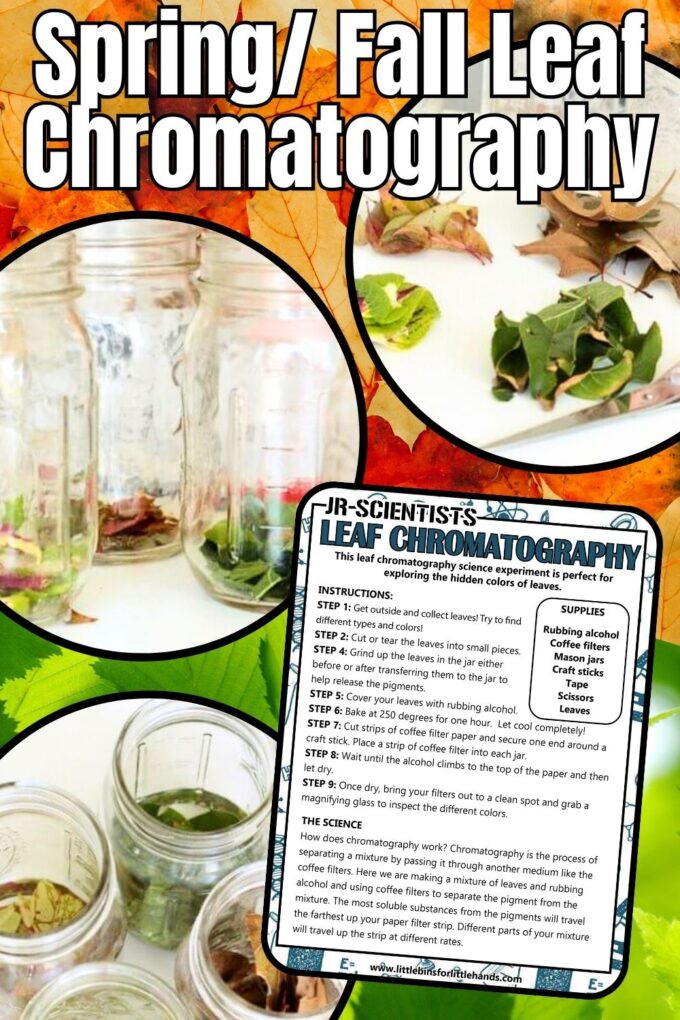
Simple Science That Gets Kids Outdoors!
One of the things that I love most about this activity is getting kids outdoors on a nature walk or backyard hunt to collect the leaves for this simple science experiment! There’s nothing quite like exploring nature, and this activity can be enjoyed year-round too!
But it is especially fun to do in the fall, with the beautiful leaf colors! Check out more fun fall science experiments you will want to try!
What Is Leaf Chromatography?
How does chromatography work? Chromatography is the process of separating a mixture by passing it through another medium like coffee filters.
ALSO CHECK OUT: Marker Chromatography
In this chromatography experiment below, you will make a mixture with your leaves and a solvent, rubbing alcohol. You will then use coffee filters to separate the pigments from the leaf mixture.
The most soluble substances from the pigments will travel the farthest up your paper filter strip. Different parts of your mixture will travel up the strip at different rates.
During the leaf growing season, you mostly see the blue-green chlorophyll and yellow-green chlorophyll, but as leaves begin to change colors {and the chlorophyll breaks down as the leaves die}, you will be able to see more yellow and orange pigments come through.
It would be fun to compare the results of leaf chromatography between summer and fall!
Why Do Plants Have Chlorophyll?
Learn a little about photosynthesis, which is converting light energy from the sun into chemical food energy. The process of photosynthesis starts with the bright green chlorophyll inside the leaves.
The plant absorbs sunlight, carbon dioxide, water, and minerals to produce the energy needed to grow. Of course, this gives us the oxygen in our air.
What colors will you find when you complete the chromatography experiment below?
Using The Scientific Method With Kids
The scientific method is a process or method of research. A problem is identified, information about the problem is gathered, a hypothesis or question is formulated from the information, and the hypothesis is tested with an experiment to prove or disprove its validity.
Sounds heavy! What in the world does that mean?!? It means you don’t need to try and solve the world’s biggest science questions! The scientific method is all about studying and learning things right around you.
As children develop practices that involve creating, gathering data evaluating, analyzing, and communicating, they can apply these critical thinking skills to any situation.
READ MORE: The Scientific Method For Kids With Examples
Note: The use of the best Science and Engineering Practices is also relevant to the topic of using the scientific method. Read more and see if it fits your science planning needs.
Helpful Science Resources To Get You Started
Here are a few resources that will help you introduce science more effectively to your kiddos or students and feel confident when presenting materials. You’ll find helpful free printables throughout.
- Best Science Practices (as it relates to the scientific method)
- Variables In Science
- Observation In Science
- Science Vocabulary
- 8 Science Books for Kids
- All About Scientists
- DIY Science Kits
- Science Tools for Kids
Tips For Applying The Scientific Method
- Apply the scientific method to this leaf chromatography experiment by using a different liquid like water for another batch and compare the results to the alcohol.
- Alternatively, compare the pigments you find in different types of leaves or different colored leaves. Lead your kids through the scientific process which we outline here.
Click here to get your free printable Leaf STEM activity!
Leaf Chromatography Experiment
Leftover leaves? Why not learn about plant respiration, try a leaf veins experiment or even enjoy a leaf rubbing craft!
Supplies:
- Rubbing alcohol
- Coffee filters
- Mason jars
- Craft sticks
- Tape
- Scissors
- Leaves
- Something to mash the leaves with like a mortar and pestle, or get creative
Note: Set aside 90 mins for this project, as the mixture must bake in the oven for 60 mins. Of course, while you are waiting, you can take the time to explore other leaf experiments or art projects.
Instructions:
STEP 1: Get outside and collect leaves! Try to find different types of leaves and colors!
STEP 2: Cut the leaves into small pieces or tear them!
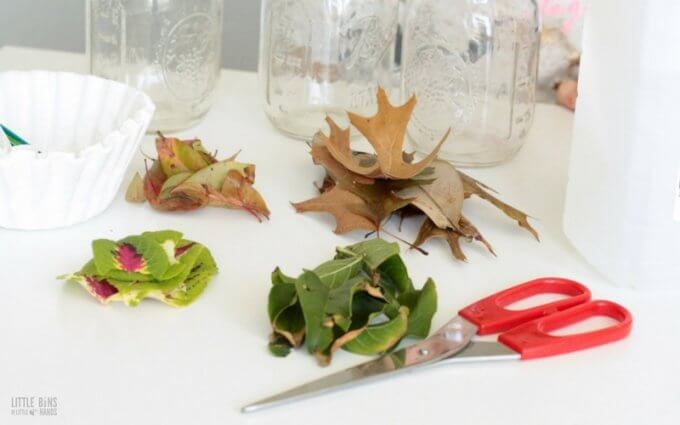
STEP 3: Put one color of a leaf into each jar.
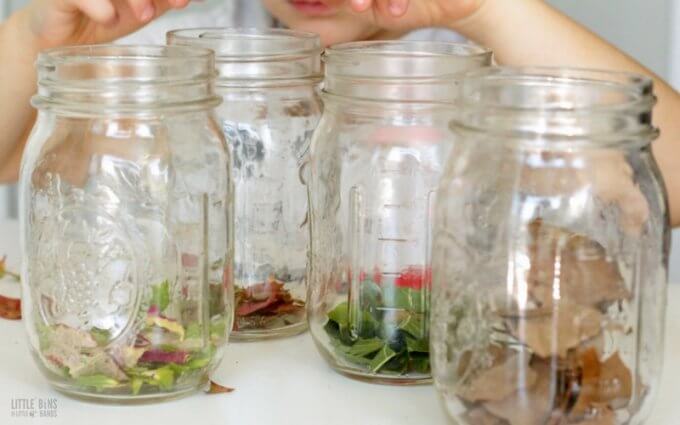
STEP 4: {optional} Find a way to grind up the leaves in the jar either before or after transferring them to the jar to help release the pigments.
This step will help make this chromatography activity have even better results. Just try to mash and grind as much as possible if you do this step.
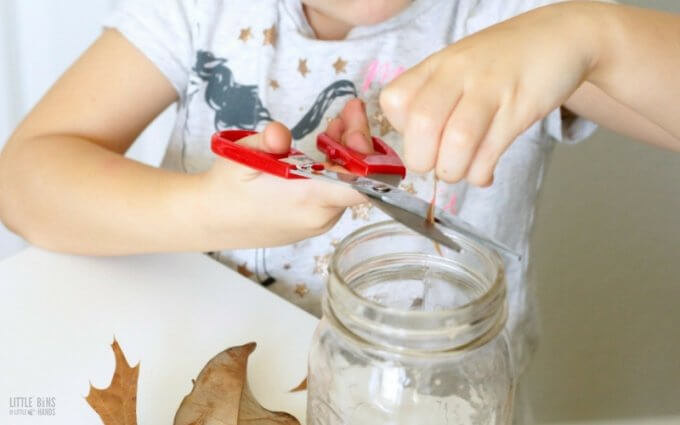
STEP 5: Cover your leaves with rubbing alcohol.
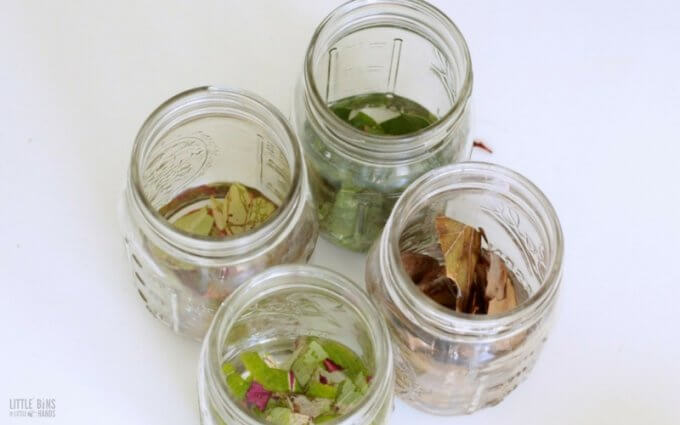
STEP 6: Bake the mixture at 250 degrees for one hour. Let it cool completely!
Adults should help and/or highly supervise with this step, depending on kids’ abilities.
STEP 7: While your leaf mixture is cooling, cut strips of coffee filter paper and secure one end around a craft stick.
Place a strip of coffee filter into each jar. The craft stick will help to suspend the paper so it doesn’t fall in, but it barely touches the surface!
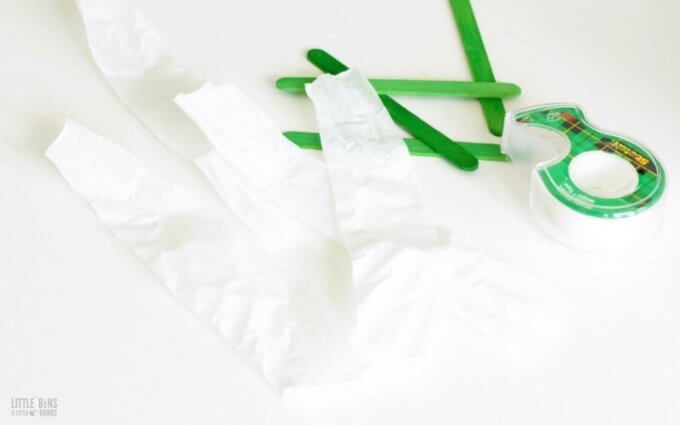
STEP 8: Wait until the alcohol climbs to the top of the paper and then let dry. Make sure to observe the changes that take place while this process happens.
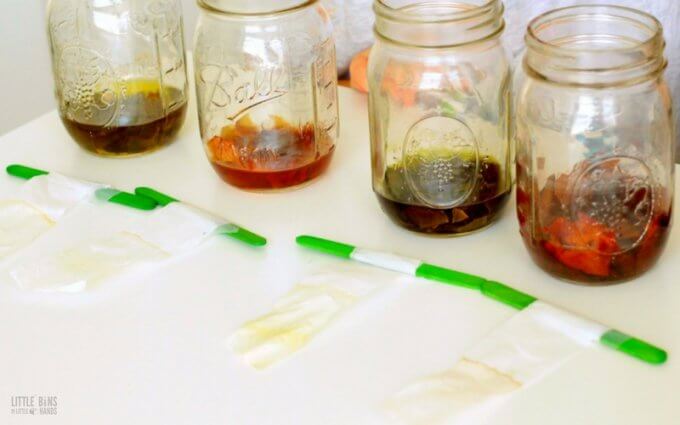
STEP 9: Once dry, bring your filters out to a clean spot {can place on paper towels} and grab a magnifying glass to inspect the different colors.

Questions For Reflection
What kinds of conclusions can be drawn? Help younger kids with their scientific skills by asking them questions to spark curiosity and observations.
- What do you see?
- What changed?
- Why do you think that happened?
Check out the results and talk about chromatography and photosynthesis with kids!
Easy and fascinating nature science for kids that explores the hidden mysteries of leaves! There is so much to explore in nature. This is a great science activity to get you outside with the kids too.
Learn More About Leaves
Looking for more plant lesson plans? Here are few suggestions for fun plant activities that would be perfect for preschoolers and elementary kids.
- Use art and craft supplies to create the different parts of a plant.
- Learn the parts of a leaf with our printable coloring page.
- Grab some leaves and find out how plants breath.
- Use these printable worksheets to learn about the steps of photosynthesis.
- Label the parts of a plant cell.
- Learn about how water moves through the veins in a leaf.
- Find out why leaves change color with our printable lapbook project.
Printable Leaf Project Pack
Explore 30+ plant and leaf activities for a variety of skill levels! Perfect for Kindergarten through Elementary school grades (or whatever skill level suits your needs). These activities are easily used for both fall and spring science lessons.
Printable Science Projects Pack
Find over 52 fantastic science projects… complete with instructions, photos, and project-specific recording sheets. Plan a science fair and more!
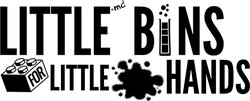

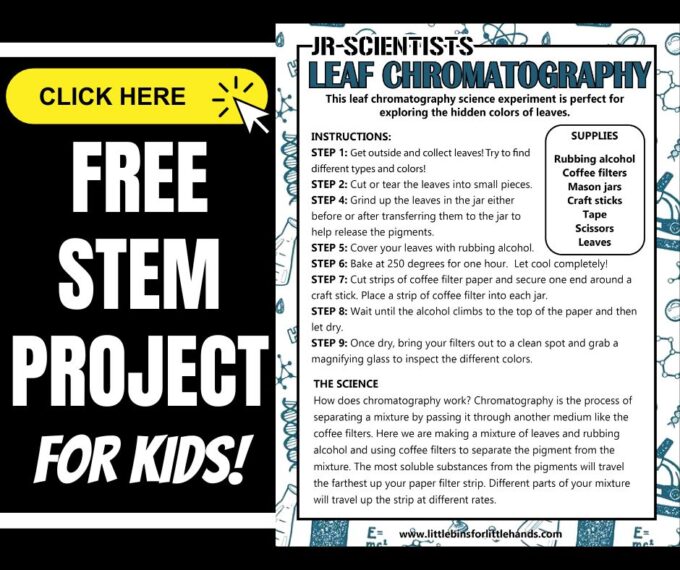
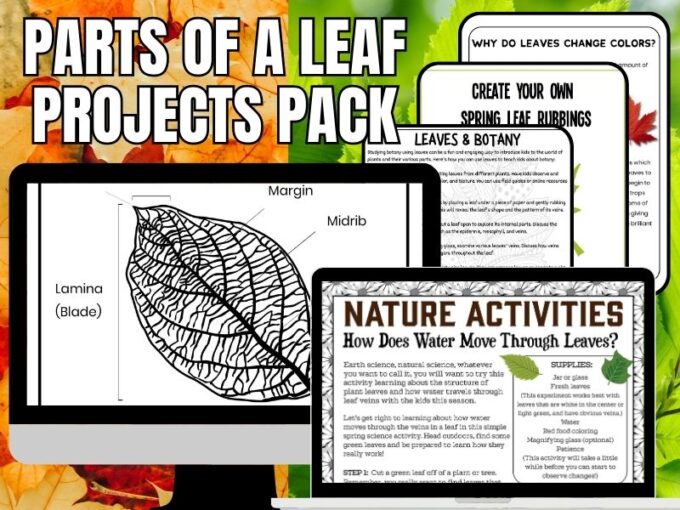
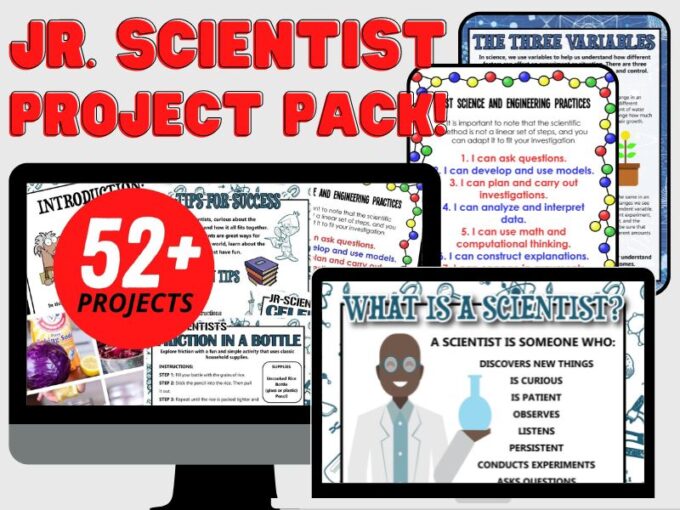
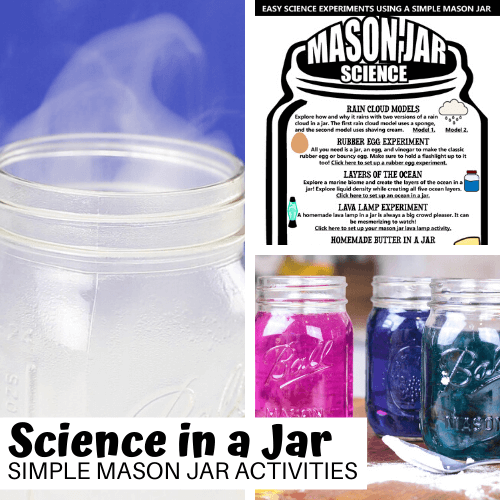
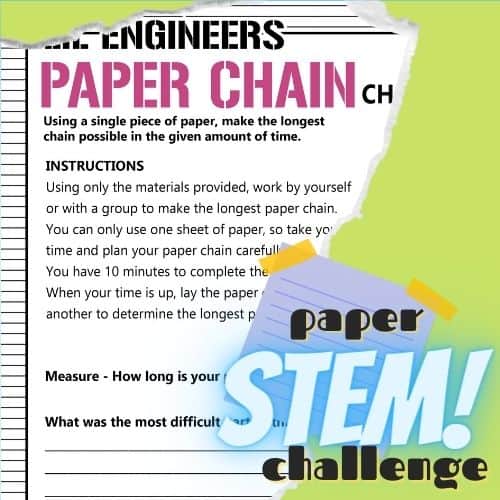
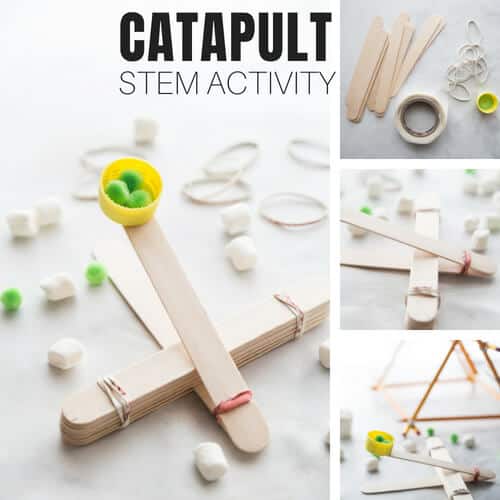
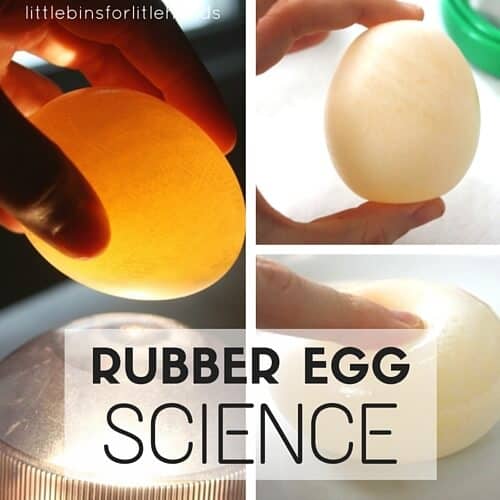
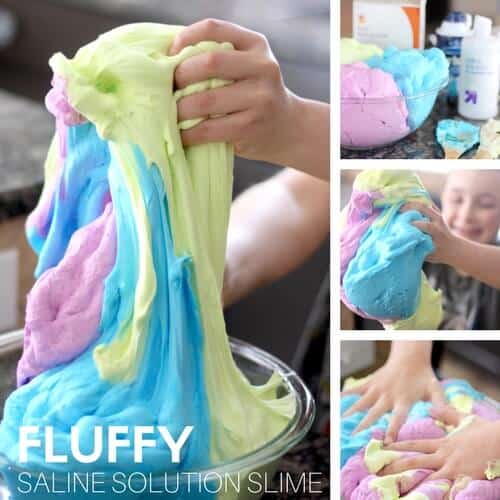

One Comment
Comments are closed.